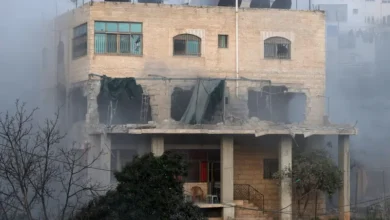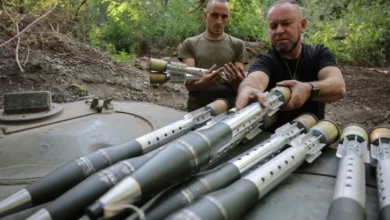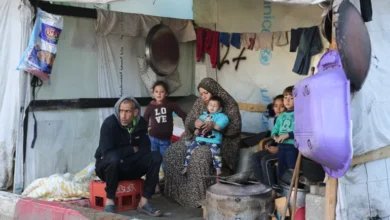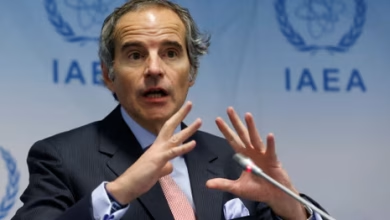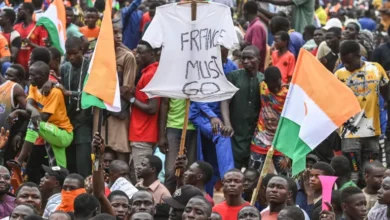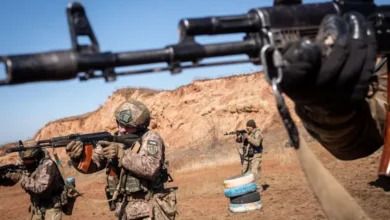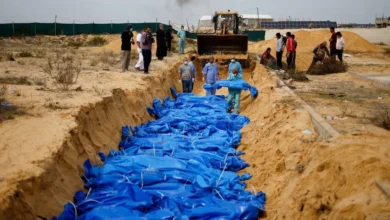A city at risk of collapsing: The cost of the search for gold in Zimbabwe
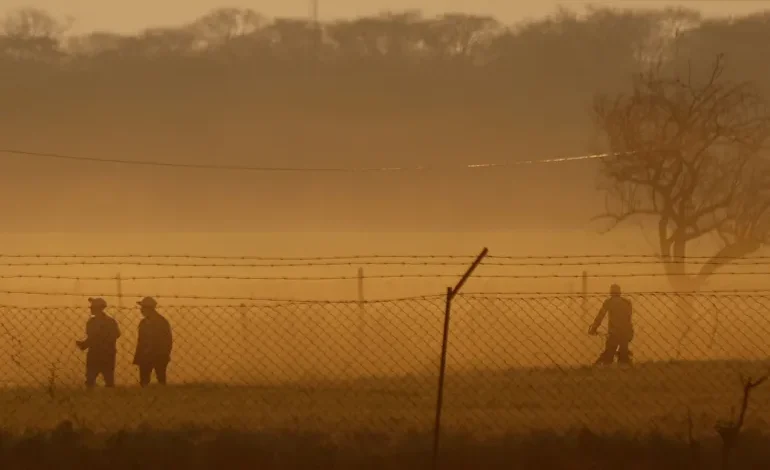
Dorothy Moyo says a prayer every time she walks, runs or drives around her neighbourhood in central Zimbabwe – afraid that the earth will give away from beneath her feet, dragging her underground.
The 36-year-old’s fear is not uncommon among the hundreds of families living in the Globe and Phoenix community, a mining compound in Kwekwe, more than 200km (125 miles) from the capital Harare.
Last year, on an afternoon in mid-May, Moyo had visited the local school – Globe and Phoenix Primary – to check on her daughter and get an appraisal from the teacher when suddenly the ground began to shake.
She vividly recalled the moment she heard the noise of the falling desks and chairs followed by the screams of children.
“I was just a few feet away from the scene, clearly indicating that I was also in the danger zone. It was scary,” Moyo told Al Jazeera. “Instead of going to rescue those who were crying, I ran to safety,” she admitted.
Fourteen children were injured when the class caved in as illegal small-scale miners burrowed beneath the pillars that had held the school up for more than a century.
Although only one classroom collapsed, findings from the Department of Civil Protection said the whole area was in danger.
In the aftermath, the school was permanently shut down and 900 of the 1,500 affected children were transferred to the neighbouring school, while others use offices at the Globe and Phoenix Mine as classrooms.
After the collapse, there have been other similar incidents caused by illegal mining in Kwekwe.
In communal areas around the city, livestock have been the main victims of the earth giving in. But in another incident near the Globe and Phoenix compound last May, a house collapsed and was swallowed by a mine tunnel, authorities said.
Tonnes of gold
As part of Zimbabwe’s broader macroeconomic roadmap towards achieving an upper-middle-income economy by 2030, the government unveiled plans in October 2019 to revitalise the mining sector and create a $12bn economy by the end of 2023 (the latest available figures from 2022 put the value at around $5.6bn).
This plan would be driven by the mining of gold – which is Zimbabwe’s biggest export – along with platinum, diamonds, chrome, iron ore, coal, lithium and other minerals, the government said.
Kwekwe, in Zimbabwe’s Midlands province, is a key site for minerals and mining.
The city of more than 100,000 people houses the headquarters of Zimbabwe’s largest steelworks, a major power-producing plant, and the country’s largest ferrochrome producer.
It is also known for its rich gold alluvial soils and is home to one of the biggest gold mines in the country, the privately owned Globe and Phoenix Mine, which was founded in 1894 but has been operating on and off since 2002.
Exploration in the surrounding area, as well as the emergence of new mines, shows the existence of tonnes of gold. As a result, in the past three decades, thousands of small-scale miners searching for their fortunes have made their way to the city, digging pits on the surface and tunnelling underground.
After last year’s cave-in at the school, the Zimbabwe Environmental Law Association (ZELA) issued a statement expressing concern about the ways mining was being conducted.
“The collapse of the classroom block at Globe and Phoenix Primary School is once again a reminder that irresponsible mining is retrogressive and should not be tolerated at any level,” the environmental watchdog’s statement said.
Although ZELA said it appreciates that mining is the backbone of economic recovery, and that strategies like the $12bn mining economy are important for development, it noted that a successful strategy must take cognisance of the environment, the communities, and be supported by a strong regulatory and monitoring framework.
“This incident must be a clarion call for authorities to act on the best possible ways to regulate the artisanal and small-scale mining sector to discourage illegal activity and noncompliance,” warned ZELA.
Kwekwe’s mayor, Councillor Albert Musungwa Zinhanga, told Al Jazeera the city has bylaws in place with regards to trespassing on private property, which they are enforcing. However, others need to be updated.
When it comes to environmental safety laws, for example, the city is instituting bylaws to protect the central business district from mining activities, he said. “Some of them we are going to be working on, so that we enforce the things … not covered when those bylaws were formulated.”
“The whole city is on top of a web of tunnels,” she said. “But now the artisanal miners when they see gold on the pillars, they burrow through, posing danger to human lives.”
The pillars are blocks of untouched rock that are purposefully left underground to support the overlying strata, as mined material is being extracted. While big mining companies leave the pillars – and the gold they contain – untouched to protect the stability of the whole operation, illegal miners looking for any bit of gold often target the pillars in old mines without regard for the structural consequences.
“The economy has contributed to this,” Mashinge said, “but it is regrettable.”
Speaking to Al Jazeera, small-scale miner Patrick Hokoyo said miners like him do not usually dig further underground, but often follow existing tunnels in search of the yellow metal.
“In some cases, things are hard as you will be tracking gold underground, only to see it on the pillars. To us, it’s about gold. It is only when something happens that we are told it was a support pillar,” Hokoyo explained.
